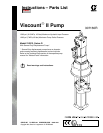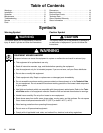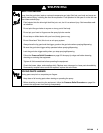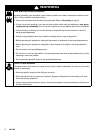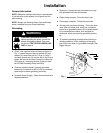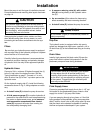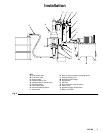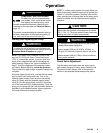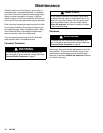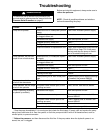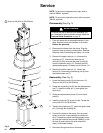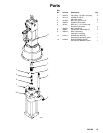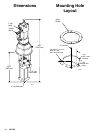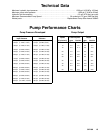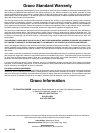
8 307160
Operation
Pressure Relief Procedure
WARNING
INJECTION HAZARD
Fluid under high pressure can be in-
jected through the skin and cause seri-
ous injury. To reduce the risk of an injury
from injection, splashing fluid, or moving parts, fol-
low the Pressure Relief Procedure whenever you
D Are instructed to relieve the pressure
D Stop spraying/dispensing
D Check or service any of the system equipment
D Install or clean the spray tips/nozzles
1. Engage the safety latch.
2. Shut off the power supply to the hydraulic motor.
3. Disengage the gun safety latch.
4. Hold a metal part of the gun firmly to the side of a
grounded metal pail. Trigger to relieve pressure.
5. Open the fluid drain valve (required in your sys-
tem) having a container ready to catch the drain-
age. Leave the drain valve open until you are
ready to spray again.
If you suspect that the spray tip or hose is completely
clogged, or that pressure has not been fully relieved
after following the steps above, very slowly loosen the
tip guard retaining nut or hose end coupling and relieve
pressure gradually, then loosen completely, then clear
the tip or hose.
CAUTION
When shutting down the hydraulic system, always
shut off the hydraulic supply line shutoff valve (S)
first, and then the return line shutoff valve (E). This
is to prevent overpressurizing the motor or its seals.
When starting the hydraulic system, open the return
line shutoff valve first.
Flushing the Pump
Flush the pump before using it for the first time to
remove the lightweight oil which is left in the pump
after factory testing to protect it from corrosion. Be
sure the solvent used is compatible with the fluid to be
sprayed, and with the wetted parts of the pump. Refer
to the Technical Data in the separate displacement
pump manual for the wetted parts. Flush until clean
solvent comes from the gun. In a circulating system,
flush long enough to clean the entire system.



